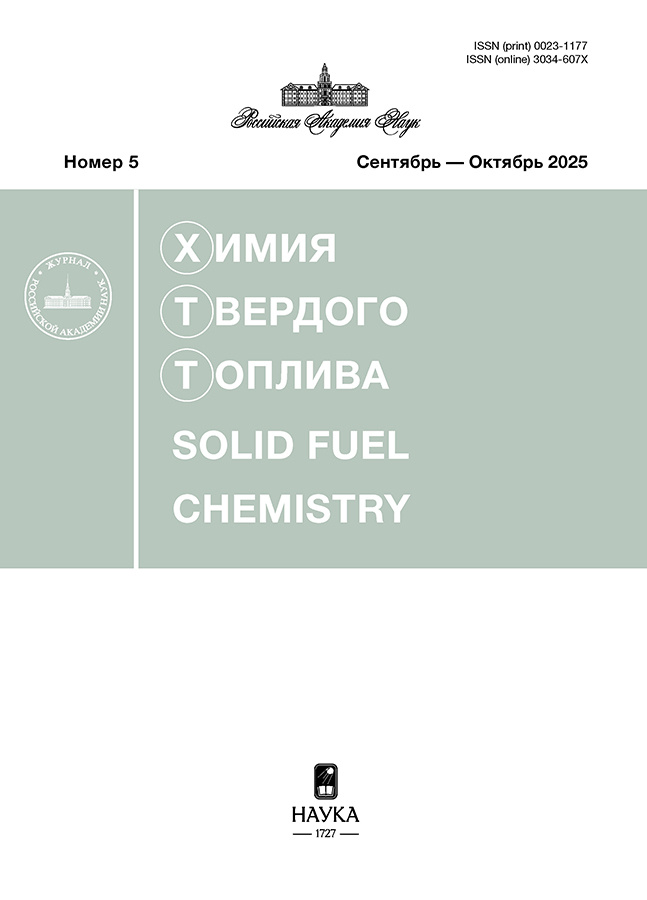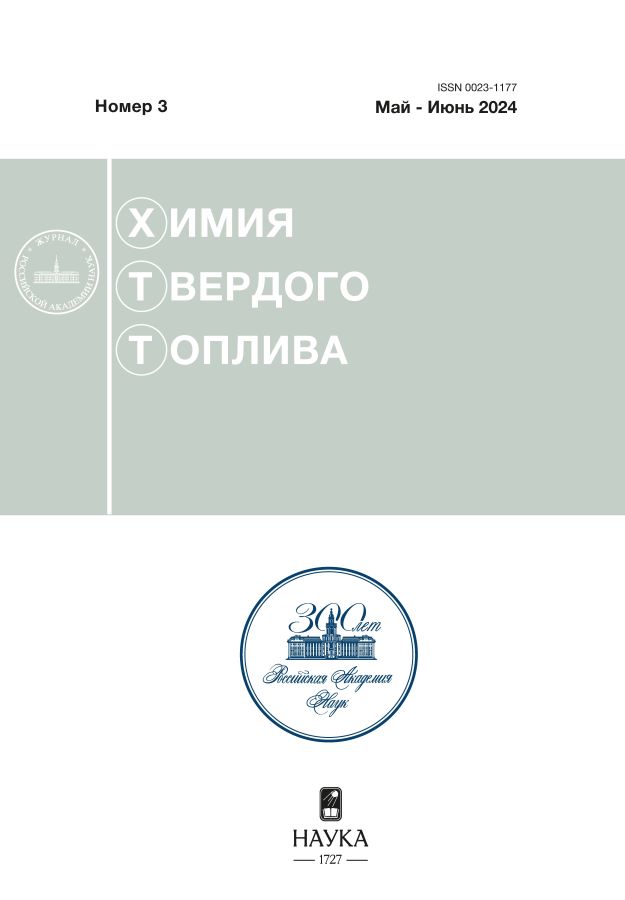Термолиз асфальта деасфальтизации в присутствии природного клиноптилолита
- Авторы: Шумовский А.В.1, Горлов Е.Г.1, Котов А.С.2
-
Учреждения:
- ФГУП Институт горючих ископаемых – научно-технический центр по комплексной переработке твердых горючих ископаемых (ФГУП ИГИ)
- ООО “Винсон Инжиниринг”
- Выпуск: № 3 (2024)
- Страницы: 82-88
- Раздел: Статьи
- URL: https://rjmseer.com/0023-1177/article/view/677497
- DOI: https://doi.org/10.31857/S0023117724030109
- EDN: https://elibrary.ru/NBSSOE
- ID: 677497
Цитировать
Полный текст
Аннотация
Представлены результаты исследования процесса термоконверсии (термолиза) асфальта деасфальтизации в присутствии природных цеолитов. Так как клиноптилолит является наиболее распространенным типом природных цеолитов России, в случае внедрения предлагаемого процесса в промышленности он будет обеспечен цеолитом в требуемых объемах. Подобраны условия, при которых наблюдалась наиболее интенсивная конверсия сырья с образованием значительных количеств бензиновых и дизельных фракций, причем выход светлых продуктов зависит от силикатного модуля цеолита: он увеличивается с повышением модуля. Механическая обработка клиноптилолита способствует повышению его каталитической активности в процессе термолиза асфальта.
Полный текст
Об авторах
А. В. Шумовский
ФГУП Институт горючих ископаемых – научно-технический центр по комплексной переработке твердых горючих ископаемых (ФГУП ИГИ)
Автор, ответственный за переписку.
Email: a.shumowsky@yandex.ru
Россия, Москва, 119071
Е. Г. Горлов
ФГУП Институт горючих ископаемых – научно-технический центр по комплексной переработке твердых горючих ископаемых (ФГУП ИГИ)
Email: gorloveg@mail.ru
Россия, Москва, 119071
А. С. Котов
ООО “Винсон Инжиниринг”
Email: anatoly.kotov@hotmail.com
Россия, 123610 Москва
Список литературы
- Монастырев С.В. Перспективы внедрения процесса гидрокрекинга нефтяных остатков в ОАО “НАФТАН” с целью обеспечения безостановочной переработки нефти. Промышленность. Химические технологии Вып. 15 (85). 2016. С. 213–215.
- Трусов К.И., Юсевич А.И., Агабеков В.Е. Особенности гидрокрекинга асфальта в присутствии наноразмерных сульфидов молибдена и никеля // Нефтегазохимия–2023: материалы VI Международного научно-технического форума по химическим технологиям и нефтегазопереработке, Минск, 1–3 ноября 2023 г. Минск: БГТУ, 2023. С. 36–39.
- Валяева О.В., Рябинкина Н.Н., Бушнев Д.А. Результаты термолиза асфальтенов природных битумов Войского месторождения Тимано-Печорской провинции // Геология и минеральные ресурсы Европейского Северо-Востока России : материалы XVII Геологического съезда Республики Коми, 16–18 апреля 2019 г. / РАН, УрО, Коми науч. центр, Ин-т геологии.
- Rustamova J.Т.et.al. Investigations of catalytic properties of the natural zeolites of Azerbaijan. Chemistry, Materials Science. Austrian Journal of Technical and Natural Sciences. С. 81–84. Corpus ID: 93174431
- Кустовская А.Д. Косенко Е.И. // Нефтехимия. 2014. Т. 54. № 2. С. 141–145.
- Романовский Б.В., Гонсалес А., Топчиева К.В. // Кинетика и катализ. Т. 23. № 1. С. 164–169.https://vims-geo.ru/documents/659/БелоусовПЕ.pdf
- Горлов Е.Г., Котов А.С., Горлова Е.Е. // Химия твердого топлива. 2009. № 1. С. 31-38.
- Московская И.Ф., Романовский Б.В. // ЖФХ. 2019. Т. 93. № 10. С. 1455–1460.https://doi.org/10.1134/S0044453719100194
- Бебия А.Г., Гуляев П.Ю., Милюкова И.В. // Вестник Югорского государственного университета. 2015. Вып. 2 (37). С. 58–61.
- Дабижа О.Н., Хатькова А.Н., Дербенева Т.В. // Сорбционные и хроматографические процессы. 2012. Т. 12. Вып. 6. С. 860–866.
- Дабижа О.Н., Дербенева Т.В., Хатькова А.Т., Филенко Р.А., Патеюк Т.П. // Химия в интересах устойчивого развития. 2016. Т. 24. № 2. С. 193–201.https://doi.org/10.15372/KhUR20160211
- Ломоносов В.А., Цыганов А.Р., Панасюгин А.С., Машерова Н.П., Григорьев С.В. Изучение структурных особенностей и условий механохимического модифицирования клиноптилолита для разработки на его основе селективных сорбентов.https://rep.bntu.by/bitstream/handle/data/91827/Izuchenie_strukturnyh.pdf?sequence=1&isAllowed=y
Дополнительные файлы













